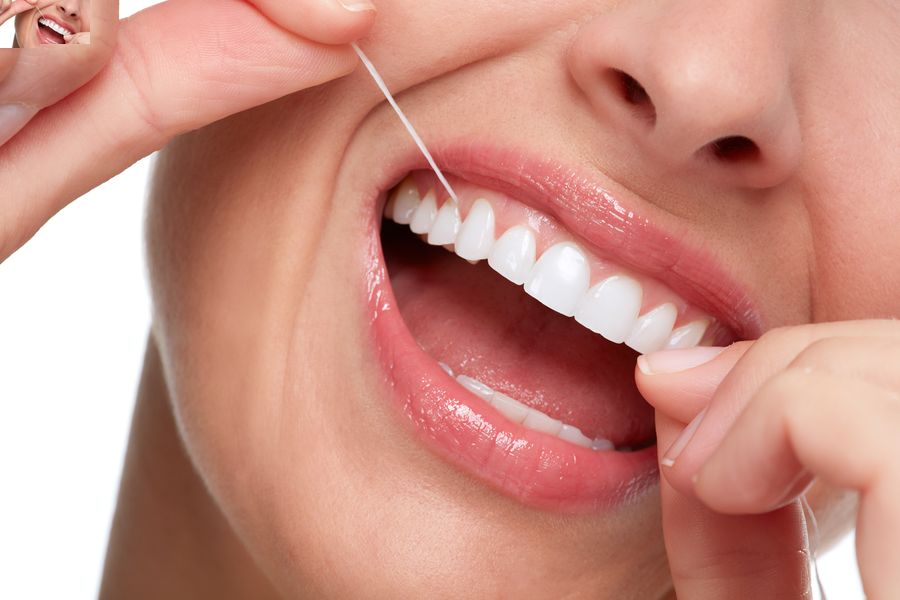Flossing is a frequently overlooked necessity for good dental health, much like keeping weeds from growing in between a beautiful fence, flossing keeps the teeth looking good and in pristine condition. While regular flossing is something most of us are taught, it’s usually the most neglected, like a chore we can’t wait to move past. On top of that, flossing incorrectly won’t do much in preventing tooth decay or gum disease.
To make sure you’re flossing and flossing the right way, let’s go over how to perfect your flossing technique and find the right kind of floss for you.
Why Flossing is a Must
Regular teeth brushing is usually the first thing people think of as at-home dental care, but flossing is just as essential to maintaining strong and healthy teeth. Let’s go over some of the benefits that come with a good flossing regularly done:
- Preventing bad breath: Cavities and gum disease come from plaque build-up in the mouth, which creates a foul smell. By removing plaque from between the teeth with floss, you’re minimizing the bacteria that cause the smell and making for fresher breath.
- Reducing gum disease risk: Speaking of prevention, gum disease can lead to tooth loss and other serious health problems. Flossing removes the food and bacteria from between the teeth that brushes can’t reach, reducing gum inflammation and the risk of developing gum disease.
- Cavity prevention: Cavities are caused by acid-producing bacteria that eat away at tooth enamel. Brushing doesn’t remove all the food particles or plaque that creates the bacteria, which flossing would get rid of.
Many people may find flossing inconvenient or uncomfortable, which is fair, but the benefits are far better than the consequences of not regularly flossing, and less uncomfortable or inconvenient.
Flossing Techniques
Flossing properly seems like a simple thing to do, but improper cleaning can both damage the gums and do less for removing food or bacteria from between the teeth. Also, it surprises a lot of people to know that there are various flossing techniques to use in your oral hygiene routine:
- C-shape flossing method: Curving the floss into a C-shape around each tooth and gently gliding it up and down. This method both cleans the tooth surface and the gum line.
- Sawing Method: Moving the floss back and forth in between the teeth to remove food particles that may be stuck.
As this is a guide to good flossing, there are some parts of using floss that many people are unaware of, including a proper flossing method:
- Reusing floss: Make sure the floss length is enough so no part is reused. Reusing part of the floss can redistribute the bacteria or even damage the gums.
- Proper flossing: Use 18 inches, or arm’s length, of floss so as to not reuse, wrap it around the fingers and pull it taut to leave only a few inches for cleaning. You can start with the upper or lower teeth, whichever you want to clean first, and continue moving forward from back to front. Remember to not use the same part of floss over and over. Fresh floss for a fresh space.
Different Types of Floss
Traditional string floss isn’t for everyone and now there are many types available:
- Floss picks: the most common flossing alternative, they’re small plastic sticks with a single strand of floss attached to one end and a pointed pick on the other. It’s a good option for people who find wrapping traditional floss difficult or for people with braces.
- Interdental brushes: tiny brushes designed to clean deeper between the teeth and gums than traditional dental floss. They’re a good option for those who have larger gaps between the teeth or who have orthodontic appliances.
- Waterpiks: These mechanisms use a concentrated stream of water to remove plaque and food debris from in between the teeth, and are very effective when used correctly. Just remember, they do not replace brushing.
Choosing the Right Floss for Your Teeth
To choose the best floss for you, there are a few things to consider:
- Do you have large gaps between your teeth? If so, tape floss would be a better option.
- Do you have tight spaces between your teeth? If so, thinner floss would be best to get between them.
- Do you have sensitive gums? Unwaxed floss would be best as they don’t fray like waxed ones do.
- Talk with your dentist about flossing concerns and see what they recommend.
Now that you understand how important flossing is to oral hygiene and proper flossing techniques, be sure to have regular dental appointments so you can catch any oral health issues early, including those that affect or come from a lack of or improper flossing.
If you are looking for a dentist, we have numerous payment options available and if you have dental benefits, we will submit your claims on your behalf. We also welcome cash, Visa, MasterCard, and e-Transfer payment methods to help make the dentist visit as pain-free as possible.
If you have any questions or concerns about our dental services or would like to schedule an appointment, you can call us at 587-801-1939 or contact us here.

